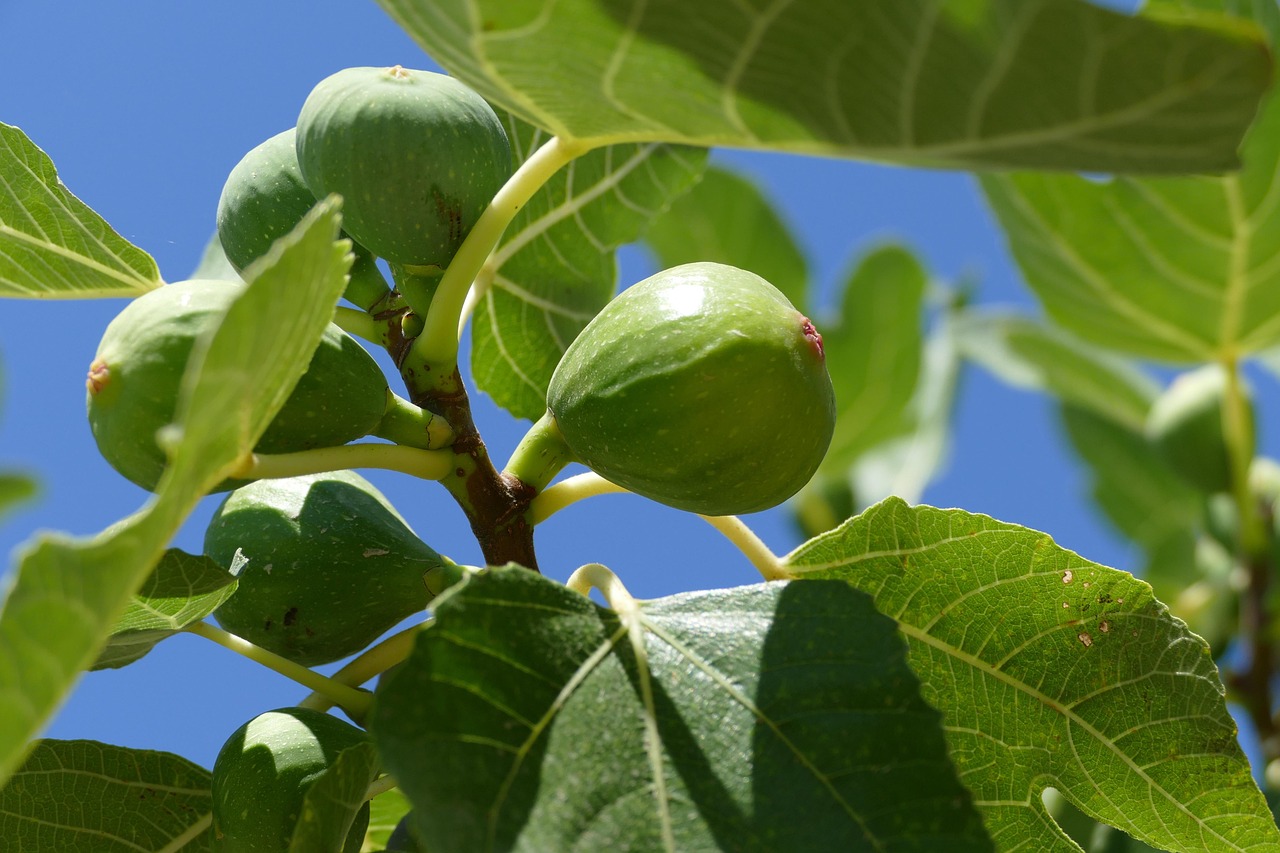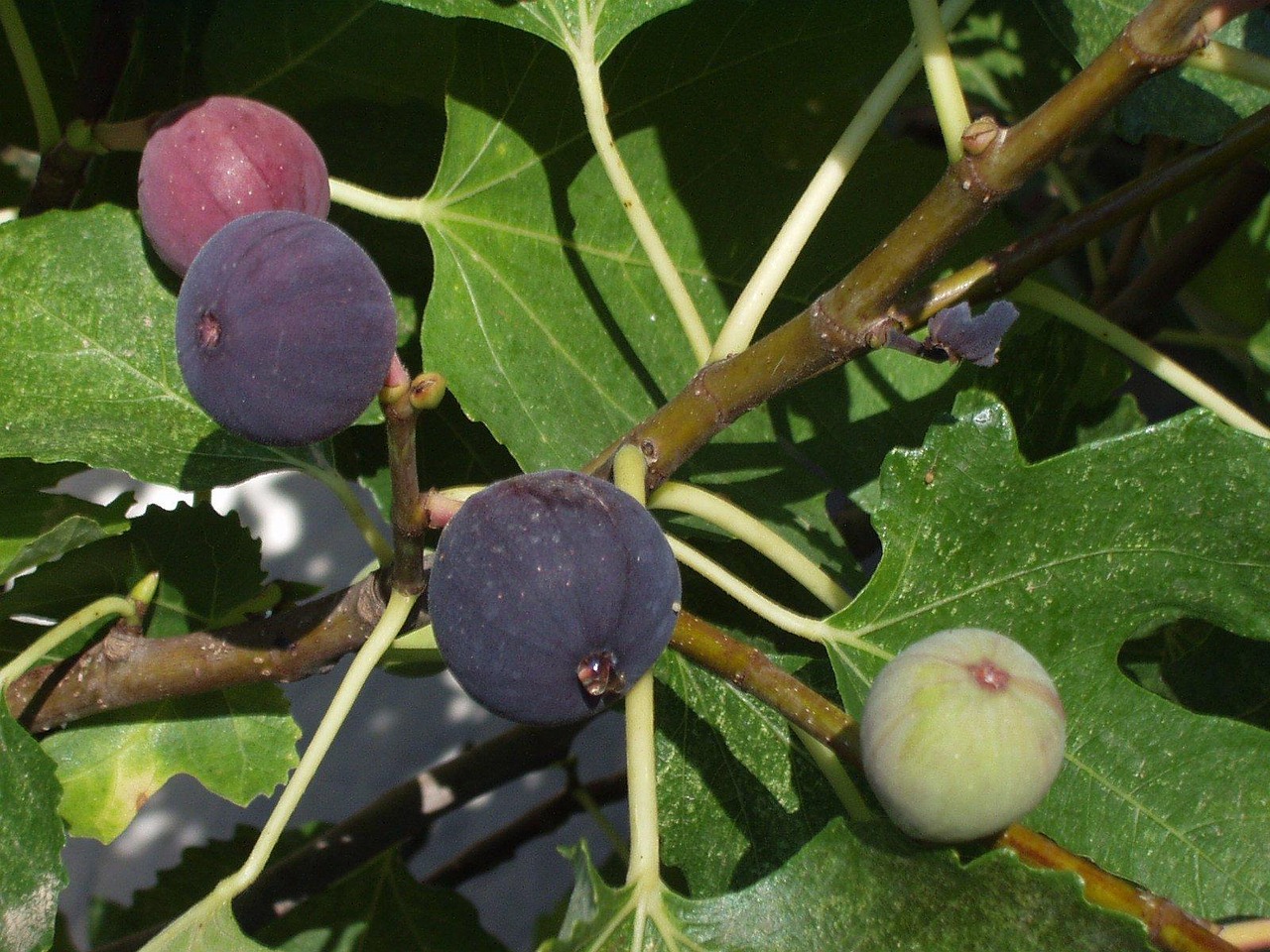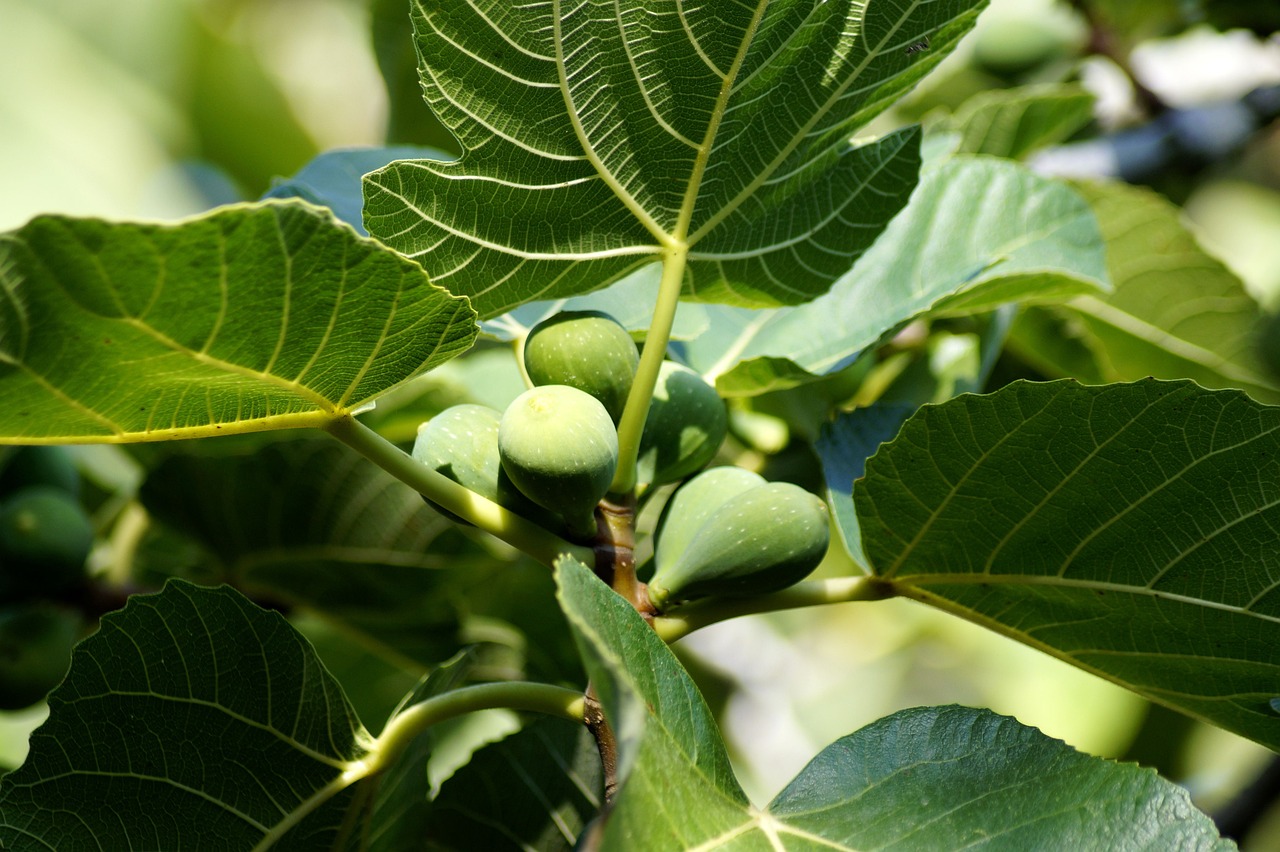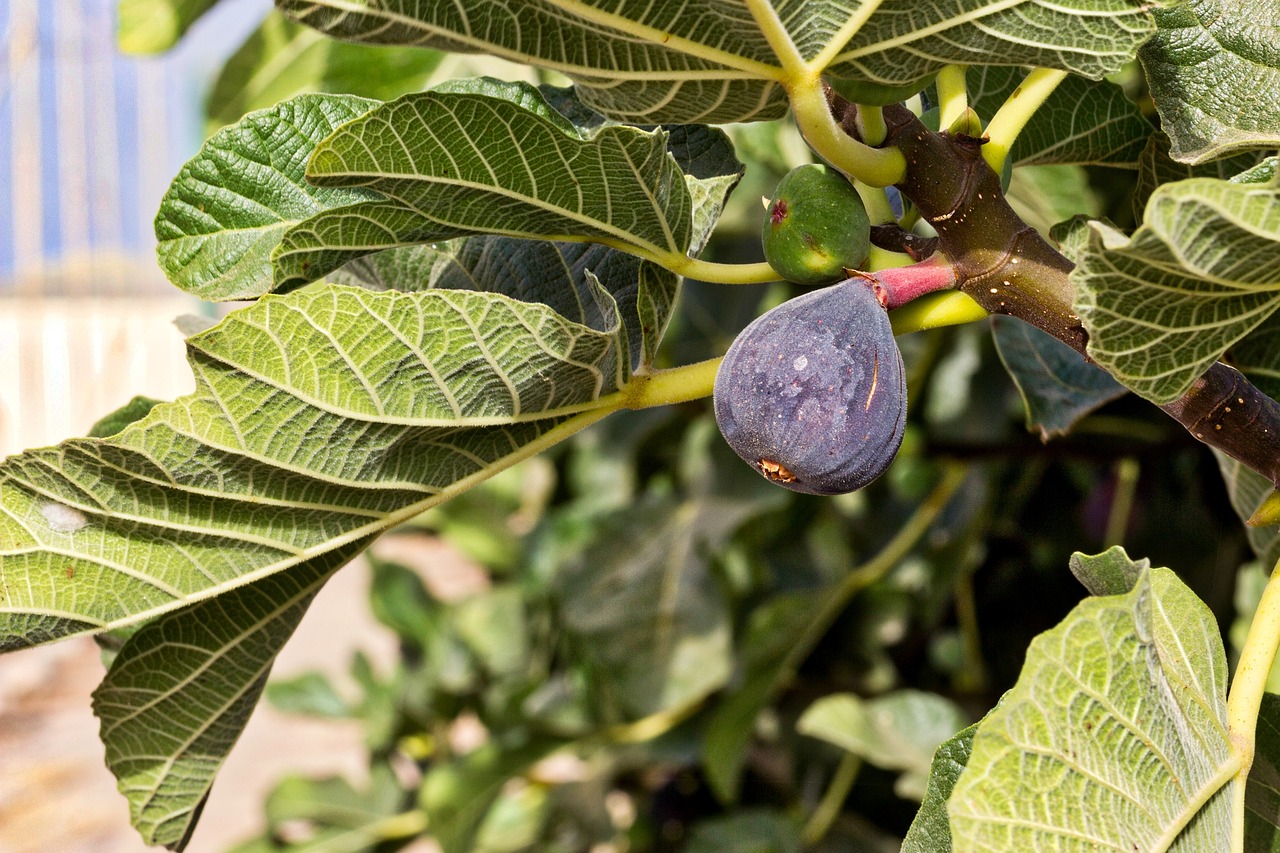Pruning fig trees is essential for achieving balanced growth in small gardens. Proper pruning enhances fruit production, maintains tree health, and encourages a manageable size, making it easier to care for your tree in limited spaces.
Fig trees are popular among home gardeners for their delicious fruit and attractive foliage. They can thrive in small gardens, but without proper care, they can become unruly. Pruning plays a crucial role in keeping fig trees healthy and productive. By removing dead or overcrowded branches, you can improve air circulation and sunlight penetration, which are vital for the tree’s growth.

Understanding the structure of fig trees is important for effective pruning. Figs grow in a unique way, producing fruit on both new and old wood. This means that the timing and technique of pruning can significantly impact the yield of fruit. In small gardens, where space is limited, maintaining a balanced shape and size becomes even more critical.
Benefits of Pruning Fig Trees
Pruning fig trees offers numerous advantages that contribute to their overall health and productivity. Here are some key benefits:
- Improved Air Circulation: Removing excess branches allows better airflow through the tree, reducing the risk of disease.
- Enhanced Sunlight Exposure: Pruning opens up the canopy, ensuring all parts of the tree receive adequate sunlight.
- Increased Fruit Production: A well-pruned tree focuses its energy on producing fruit rather than sustaining excessive foliage.
- Better Shape and Size: Regular pruning helps maintain a manageable size, making it easier to harvest fruit.
- Healthier Growth: Eliminating dead or diseased branches encourages new growth and keeps the tree vigorous.
For successful pruning, it is essential to know when and how to prune your fig tree. The best time to prune is during the late winter or early spring when the tree is still dormant but close to its active growing season. This timing helps reduce stress on the tree and promotes quicker healing after cuts.

Tools Needed for Pruning
Having the right tools is crucial for effective pruning. Here are some recommended tools you should have:
- Pruning Shears: Ideal for cutting smaller branches up to ¾ inch thick.
- Loppers: Useful for thicker branches that are difficult to cut with shears.
- Saw: A hand saw or pruning saw is necessary for larger limbs or branches.
- Gloves: Protect your hands from cuts and scrapes while working.
- Disinfectant: Clean your tools between cuts to prevent the spread of disease.
Basic Pruning Techniques
When it comes to pruning fig trees, several techniques can help achieve optimal results. Here are some basic methods to follow:
- Thin Out Crowded Areas: Identify branches that are crossing or overcrowded. Remove them to improve airflow and light penetration.
- Remove Dead Wood: Look for any dead, damaged, or diseased branches. Cut them back to the base to encourage healthy growth.
- Shorten Long Branches: If some branches are growing too long, trim them back to promote a more balanced shape.
- Shape the Tree: Aim for an open center shape that allows light and air to reach all parts of the tree.
- Cut at an Angle: Always cut at a slight angle to prevent water from pooling on the cut surface, which can lead to rot.
Pruning can seem daunting at first, but with practice and knowledge, it becomes easier. Taking the time to learn about proper techniques will ensure your fig tree thrives in your small garden. A well-maintained fig tree will not only produce more fruit but also enhance the beauty of your garden space.

The next sections will delve deeper into specific pruning strategies for various fig tree varieties and how to address common challenges faced by gardeners. Understanding these aspects will prepare you for a successful pruning experience that leads to a flourishing fig tree in your garden.
Understanding Fig Tree Varieties
Before diving into specific pruning strategies, it is essential to understand the different varieties of fig trees. Each variety has unique growth habits and fruiting characteristics. Recognizing these differences will help you tailor your pruning techniques for optimal results.
Common Fig Tree Varieties
Here are some of the most popular fig tree varieties that you might encounter:

- Brown Turkey: This variety is known for its adaptability and produces sweet, medium-sized figs. It has a bushy growth habit and requires regular pruning to maintain its shape.
- Celeste: A smaller tree that produces small, sweet figs. Celeste figs are particularly cold hardy and benefit from pruning to promote better airflow.
- Kadota: This variety yields large, greenish-yellow figs. Kadota trees can grow quite tall, so strategic pruning is necessary to keep them manageable.
- Mission: Known for its dark purple fruit, the Mission fig tree thrives in warmer climates. It benefits from careful pruning to enhance fruit production.
Seasonal Pruning Techniques
The timing of your pruning efforts plays a significant role in the health of your fig tree. Different seasons call for different approaches. Below are seasonal strategies that can be utilized for effective fig tree maintenance.
Winter Pruning
Winter is the best time for major pruning because the tree is dormant. During this season, focus on:
- Removing Dead or Diseased Wood: Inspect the tree for any branches that appear dead or sickly. Cut these back to the base to prevent disease from spreading.
- Shaping the Tree: Thin out crowded areas and shorten long branches to create a balanced shape.
- Encouraging New Growth: Make cuts that will stimulate new growth in the spring while preserving the overall structure of the tree.
Spring Pruning
Spring is primarily about fine-tuning your fig tree’s shape and encouraging fruit production. Key activities include:
- Light Pruning: Remove any suckers or water sprouts that emerge from the base or along the trunk.
- Adjusting Spacing: If the tree has grown significantly, consider removing some branches to allow more sunlight into the center.
- Assessing Fruit Development: Look for areas where fruit is developing. Ensure that branches are not overcrowded to allow for a better yield.
Pruning Techniques for Different Growth Habits
Depending on the growth habit of your fig tree variety, different pruning techniques may be more effective. Here are some approaches based on common growth habits.
Bushy Growth Habit
Trees like Brown Turkey and Celeste often develop a bushy appearance. To manage this:
- Open Up the Canopy: Remove interior branches that block light and air from reaching the center of the tree.
- Focus on Lower Branches: Trim back lower branches to avoid crowding and allow for better sunlight exposure.
Tall Growth Habit
Varieties such as Kadota may grow tall and require special attention. Consider these techniques:
- Top Pruning: Regularly trim the top of tall trees to encourage lateral growth and maintain a manageable height.
- Crown Reduction: Gradually reduce the crown size over several seasons to avoid shock and promote balanced growth.
Common Mistakes to Avoid When Pruning Fig Trees
Avoiding common pitfalls can significantly improve your pruning outcomes. Here are some mistakes to watch out for:
- Over-Pruning: Removing too much foliage can stress the tree and reduce fruit production.
- Poor Timing: Pruning at the wrong time of year can harm your tree’s health and fruit yield.
- Neglecting Tool Maintenance: Using dull or dirty tools can cause damage to the tree and spread disease.
By understanding fig tree varieties, seasonal needs, and effective pruning techniques, you can cultivate a thriving fig tree in your small garden. The next sections will explore specific challenges faced during pruning and how to address them effectively for optimal growth and harvest.
Addressing Common Challenges in Pruning Fig Trees
Pruning fig trees can sometimes present challenges, especially for novice gardeners. Understanding these challenges and how to address them will lead to better tree health and fruit production. Below are some common issues faced during pruning and effective strategies to overcome them.
Dealing with Pests and Diseases
Pests and diseases can significantly impact the health of your fig tree. It is important to identify any issues early and respond appropriately. Here are some common pests and diseases that may affect fig trees:
- Fig Beetles: These pests can cause damage to leaves and fruit. Regular inspections are vital for early detection. Consider using organic pesticides or traps.
- Scale Insects: These small insects suck the sap from the tree, leading to weakening. Hand-picking or using horticultural oil can help control their population.
- Root Rot: Caused by overwatering or poor drainage, root rot can be fatal. Ensure proper drainage and avoid excessive watering to prevent this issue.
- Powdery Mildew: This fungal disease appears as a white powdery substance on leaves. Improve air circulation through pruning and apply fungicides if necessary.
Pruning Techniques for Diseased or Damaged Trees
If your fig tree is affected by disease or damage, specific pruning techniques can help restore its health:
- Identify Affected Areas: Carefully inspect the tree for any branches showing signs of disease or damage.
- Remove Infected Branches: Cut away any branches that are diseased, ensuring you prune back to healthy wood.
- Disinfect Tools: Always clean your pruning tools with a disinfectant after cutting diseased wood to prevent spreading pathogens.
- Encourage Recovery: After pruning, give the tree extra care, including proper watering and fertilization, to help it recover.
Timing Your Pruning Correctly
The timing of your pruning efforts is crucial for the health and productivity of the fig tree. Fig trees respond differently based on when they are pruned:
Late Winter Pruning
Late winter is typically recommended for major pruning activities. During this time:
- Focus on Structure: Shape the tree and remove any dead or crossing branches.
- Inspect for Weakness: Look for branches that may not support future growth or fruit and remove them.
Summer Pruning
Summer pruning involves lighter pruning techniques that can be beneficial for maintaining size and health:
- Remove Suckers: Regularly check for suckers that grow at the base of the tree and remove them to redirect energy to fruiting branches.
- Thin Out Crowded Areas: If you notice overcrowding in the canopy, lightly thin these areas to promote airflow and sunlight access.
Special Considerations for Container Fig Trees
If you are growing a fig tree in a container, there are additional considerations to keep in mind during pruning:
- Limit Size: Container fig trees should be pruned more frequently to maintain a manageable size, especially if space is limited.
- Avoid Root Bound Issues: Check the roots periodically and prune any that are circling the pot to encourage healthier growth.
- Adjust Watering Practices: Container figs may require more frequent watering than those planted in the ground, especially after pruning.
The Role of Fertilization in Pruning Success
Fertilization plays a significant role in supporting a fig tree’s recovery following pruning. Here are some best practices for fertilizing your fig tree:
- Select the Right Fertilizer: Use a balanced fertilizer with equal parts nitrogen, phosphorus, and potassium to promote overall health.
- Timing of Fertilization: Fertilize after pruning during the growing season to provide nutrients as new growth begins.
- Monitor Soil Health: Conduct soil tests periodically to determine nutrient levels and amend accordingly.
By understanding common challenges associated with pruning fig trees, you can create a more productive and healthier environment for your plants. The next section will cover advanced pruning techniques and tips for maximizing fruit production while maintaining your fig tree’s health and structure.
Advanced Pruning Techniques for Fig Trees
Once you have a solid grasp of the basics of pruning fig trees, you can explore advanced techniques that can further enhance the health and productivity of your plants. Here are some strategies to consider:
Espalier Pruning
Espalier is a technique that involves training fig trees to grow flat against a wall or fence. This method maximizes fruit production while saving space. Here’s how to do it:
- Select the Right Location: Choose a sunny wall or trellis that receives ample light.
- Initial Pruning: Start by pruning the young tree to establish a central leader and lateral branches that will form the framework.
- Regular Maintenance: Continue to prune regularly to maintain the shape and encourage fruiting on the horizontal branches.
Crown Thinning
Crown thinning is another advanced technique that focuses on removing select branches to improve light penetration and air circulation. Here’s how to effectively thin the crown:
- Identify Overcrowded Areas: Look for branches that are crossing or densely packed.
- Selective Removal: Cut back to the base or to a lateral branch that is well-placed. This helps maintain a balanced structure.
- Aim for 20-30% Reduction: When thinning, it’s usually best to remove no more than 20-30% of the crown to avoid stressing the tree.
Renewal Pruning
As fig trees age, they may produce fewer fruits. Renewal pruning involves cutting back older branches to stimulate new growth. The process includes:
- Identify Old Wood: Look for branches that are not producing much fruit or appear weak.
- Cut Back to Healthy Growth: Prune these branches back to a healthy lateral branch or the main trunk.
- Fertilize After Pruning: Provide proper nutrients post-pruning to encourage new growth and fruit production.
Maximizing Fruit Production
In addition to pruning, several practices can help maximize fruit production in your fig trees:
- Regular Watering: Ensure your tree receives adequate water, especially during dry spells, to support fruit development.
- Mulching: Apply mulch around the base of the tree to retain moisture and regulate soil temperature.
- Pest Management: Regularly inspect for pests and diseases, and take appropriate measures to control them.
Final Thoughts
Pruning fig trees effectively is an art that combines knowledge, timing, and technique. By understanding the specific needs of your fig tree variety, you can implement suitable pruning strategies that promote balanced growth and increase fruit yield. Remember the importance of seasonal pruning, maintaining proper care through fertilization, and addressing common challenges such as pests and diseases.
Your efforts in pruning and caring for your fig tree will ultimately result in not just a bountiful harvest but also a visually appealing addition to your small garden. As you gain experience, you will become more adept at recognizing what your tree needs at different stages of its growth. Embrace the journey of gardening, and enjoy the sweet rewards that come from nurturing your fig tree.
With these insights, you are now equipped to successfully prune and cultivate healthy fig trees in your small garden. Happy gardening!
